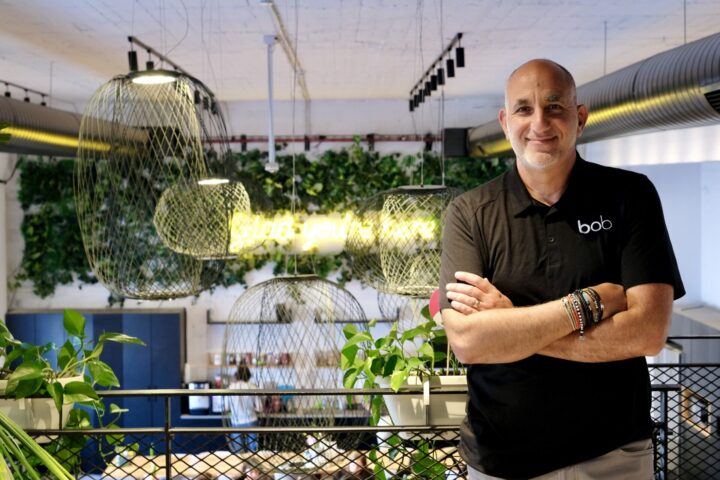What does a culture of wellbeing mean to your organisation? What would you like that to look and feel like to your people? Is anyone even asking these questions?
Perhaps it’s time we should, when you consider that more is being spent by organisations on wellbeing than ever before, yet sickness absence has reached a record high, mental health issues are through the roof, and productivity remains flatlined. If wellbeing is going to work better, for people and business, we need to move beyond simply fixing problems when they arise.
It’s arguably time for a rethink; for leadership to get more informed and aligned behind a bigger picture view.
Right now though, if data from Fruitful Insights is anything to go by, it seems leaders aren’t sure what they’re aiming for. Fruitful’s Wellbeing Maturity Index – a tool used by organisations to evaluate and measure their progress on employee wellbeing – regularly finds that leaders lack ‘strategic intent’.
In the absence of a goal and direction “the data suggests they’re throwing things at people in the hope that they solve the wellbeing problem,” says Mike Tyler, chairman and co-founder of Fruitful Insights.
Mike recently joined us for an event aimed at senior professionals in HR, wellbeing, occupational health and culture and development. Together with Dr Leandro Herrero, chief organisational architect and founder of The Chalfont Project, we asked ‘Why is workplace wellbeing worse than ever?’
“When we just focus on deficits and fixing things, we’re not creating anything new,” adds Dr Herrero.
“The question should be, how do we build a culture of wellbeing? As opposed to, how do we fix the problems?”
Why workplace wellbeing needs a rethink
UK productivity remains sluggish, if not deteriorating. Meanwhile, organisations continue to invest more and more in employee wellbeing. By this, we mean benefits and services, training and ‘awareness’ initiatives. It’s all very well-meaning and has a place. But it lacks rigour and tends to overlook the crucial role of culture in providing the foundations for wellbeing.
Against this backdrop, it perhaps comes as no surprise that both short- and long- term absences are at an all-time high. As is economic inactivity due to illness. And, even more worryingly, young people (16 to 34-year-olds) with mental health conditions are 4.7 times more likely to be economically inactive than their older peers.
Even for those in work, stress, depression or anxiety continue to account for the majority of days lost due to work-related ill-health. Again, underlying the importance of changing the underlying DNA of an organisation.
“Wellbeing strategy should not be just about fixing defects, then putting people back into the environment that created the problem in the first place,” adds Mike.
It’s generally understood that happy employees are more productive. Studies show a correlation. Indeed, Fruitful helps leaders understand the drivers of impaired wellbeing and productivity within their organisations. And, crucially, the factors that underpin those losses, taking into account culture, as well as benefits and services.
All that said, there’s also a reasoned argument here, that says a focus on wellbeing – as per a focus on everything interrelated, from employee engagement to DEI – should simply be the right thing to do, for any organisation. The business world shouldn’t need to see concrete causation before investing time and effort here.
By comparison, there’s no causal evidence to show that customer satisfaction leads to increased sales (as far as I can tell from a search on Google Scholar), yet business instinctively knows this to be the case and invests accordingly (and hugely, in comparison to culture and employee engagement).
Just by way of a sidenote, don’t bother with the Google or AI search on this, because it just presents a string of unevidenced claims made by lots of companies with their own commercial interests in mind.
So, where do we go from here?
“The first question should be, how do we build a culture of wellbeing? As opposed to how do we fix the problems,” says Dr Herrero.
“In the process of building, we have to fix things. But the worry is that you do all the fixing without thinking big picture – what are you aiming for? Everyone’s too busy just restocking the supermarket shelves to think about building something new.
“Culture is volume. Culture is scale. A pile of quick wins is important, but it’s not culture change. Behaviours are the only scalable currency in organisations – not communication, training or coaching.
“Behaviours, spread peer-to-peer, are twice as powerful as the leadership at the top when it comes to creation of culture.”
To understand this, it’s important to consider three key things:
- Behaviour is culture, not the other way around. You can have values on a wall, but unless they’re lived in simple, day-to-day behaviours – spread via social copying, not workshops and training – they don’t really exist.
- So, it stands to reason, that there is no cultural change without behavioural change (and driven by the very people it affects the most: ‘people like us’).
- Behaviour is the input that leads to important outputs. In terms of wellbeing, those outputs might be: feeling valued and heard, having a sense of trust, self-esteem and belonging. Those personal outputs, in turn, lead to important business outputs, such as: employee engagement, DEI, collaboration and innovation. Everything is interrelated but, right now, it’s all considered in isolation. Consequently, no large-scale improvement is ever seen.
Dr Herrero’s Viral Change™ philosophy states five principles for large-scale, sustainable, behavioural and culture change: a set of non-negotiable behaviours; driven by peer-to-peer influence; via informal social networks; supported by storytelling; and by leaders playing a supportive, yet backstage role.
Once you have the goal – the strategic intent – in terms of the type of wellbeing culture you want to build, the crucial job of creating of a social movement, as outlined above, can begin. Support this, concurrently, with the all-important data and insights, to help leadership make the link between wellbeing and productivity; to secure their ongoing buy-in and support.
None of this amounts to a quick win. But, if you’ve read this far, you’ve probably had your fill of quick wins (because you know they never amount to much!). Chances are you’re after something much more strategic and sustainable. And behaviour is where it’s at.
Suzanne Clarkson is partner at The Chalfont Project
















